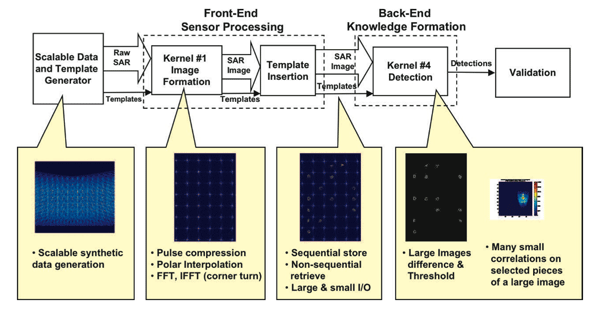This particular SAR benchmark has two operating modes (Compute Only and System) that both reflect different computing challenges. The “Compute Only Mode” represents the processing performed directly from a dedicating streaming sensor (Fig. 6). In this mode, the SDG is meant to simulate a sensor data buffer that is filled with a new frame of data at regular intervals, Tinput. In addition, the SAR image created in Stage 1 is sent directly to Stage 2. In this mode, the primary architectectural challenge is providing enough computing power and network bandwidth to keep up with the input data rate.
In “System Mode” the SDG represents an archival storage system that is queried for raw SAR data (Fig. 5). Likewise, Stage 1 stores the SAR images back to this archival system and Stage 2 retrieves pairs of images from this storage system. Thus, in addition to the processing and bandwidth challenges, the performance of the storage system must also be managed. Increasingly, such storage systems are the key bottleneck in sensor processing systems. Currently, the modeling and understanding of parallel storage systems is highly dependent on details of the hardware. To support the analysis of such hardware, the SAR benchmark has an “IO Only Mode” that allows for benchmarking and profiling.







